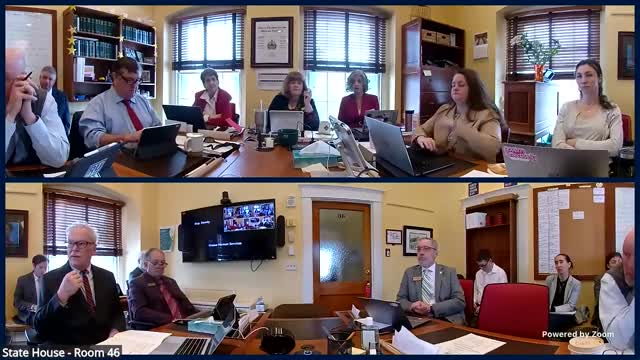Legislature discusses environmental health risks of PFAS and bill H 238 support
March 11, 2025 | Human Services, HOUSE OF REPRESENTATIVES, Committees, Legislative , Vermont
This article was created by AI summarizing key points discussed. AI makes mistakes, so for full details and context, please refer to the video of the full meeting. Please report any errors so we can fix them. Report an error »

Concerns over the pervasive presence of PFAS chemicals took center stage during the Vermont House Human Services meeting on March 11, 2025. Lawmakers expressed alarm over the potential health risks associated with these manmade chemicals, which are found in a wide array of consumer products.
Ripside Estes raised a fundamental question about the nature of PFAS, emphasizing that these chemicals are indeed manmade and have been produced through human activity. The discussion highlighted the staggering number of PFAS variants, with estimates suggesting there are around 40,000 different types. This revelation prompted concerns about the long-term implications of these substances, particularly as new replacement products emerge.
The conversation shifted to the unknown risks posed by these alternatives. One legislator recalled past experiences with chemicals that were initially deemed safe but later discovered to have harmful effects. This historical context underscored the need for caution as new products are introduced to the market.
Helen, another participant in the meeting, elaborated on how PFAS enters the human body, noting that ingestion and skin contact are the primary pathways. She pointed out that these chemicals can linger in the body and are often found in everyday items like black plastic containers and textiles. The environmental impact was also a concern, as PFAS can contaminate soil, water, and air during manufacturing processes.
As the meeting progressed, lawmakers conducted a straw poll regarding a bill addressing PFAS regulation. While no formal vote was taken, the poll indicated a general support for the bill, which aims to tackle the issue of PFAS in Vermont. The committee plans to review the bill further before any final decisions are made.
The discussions at this meeting reflect a growing urgency among Vermont lawmakers to address the health and environmental risks associated with PFAS, as they seek to prevent future harm from these widely used chemicals.
Ripside Estes raised a fundamental question about the nature of PFAS, emphasizing that these chemicals are indeed manmade and have been produced through human activity. The discussion highlighted the staggering number of PFAS variants, with estimates suggesting there are around 40,000 different types. This revelation prompted concerns about the long-term implications of these substances, particularly as new replacement products emerge.
The conversation shifted to the unknown risks posed by these alternatives. One legislator recalled past experiences with chemicals that were initially deemed safe but later discovered to have harmful effects. This historical context underscored the need for caution as new products are introduced to the market.
Helen, another participant in the meeting, elaborated on how PFAS enters the human body, noting that ingestion and skin contact are the primary pathways. She pointed out that these chemicals can linger in the body and are often found in everyday items like black plastic containers and textiles. The environmental impact was also a concern, as PFAS can contaminate soil, water, and air during manufacturing processes.
As the meeting progressed, lawmakers conducted a straw poll regarding a bill addressing PFAS regulation. While no formal vote was taken, the poll indicated a general support for the bill, which aims to tackle the issue of PFAS in Vermont. The committee plans to review the bill further before any final decisions are made.
The discussions at this meeting reflect a growing urgency among Vermont lawmakers to address the health and environmental risks associated with PFAS, as they seek to prevent future harm from these widely used chemicals.
View full meeting
This article is based on a recent meeting—watch the full video and explore the complete transcript for deeper insights into the discussion.
View full meeting